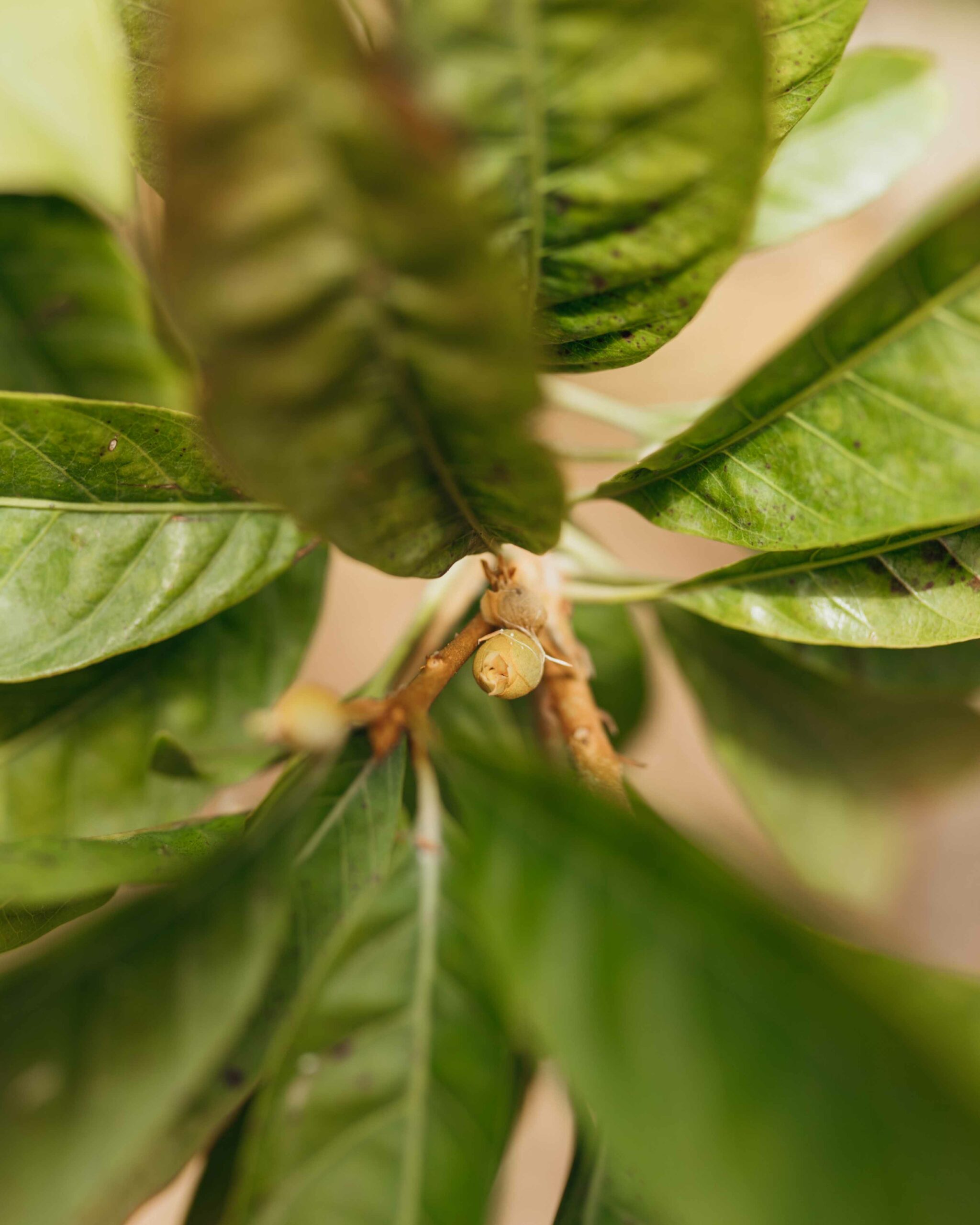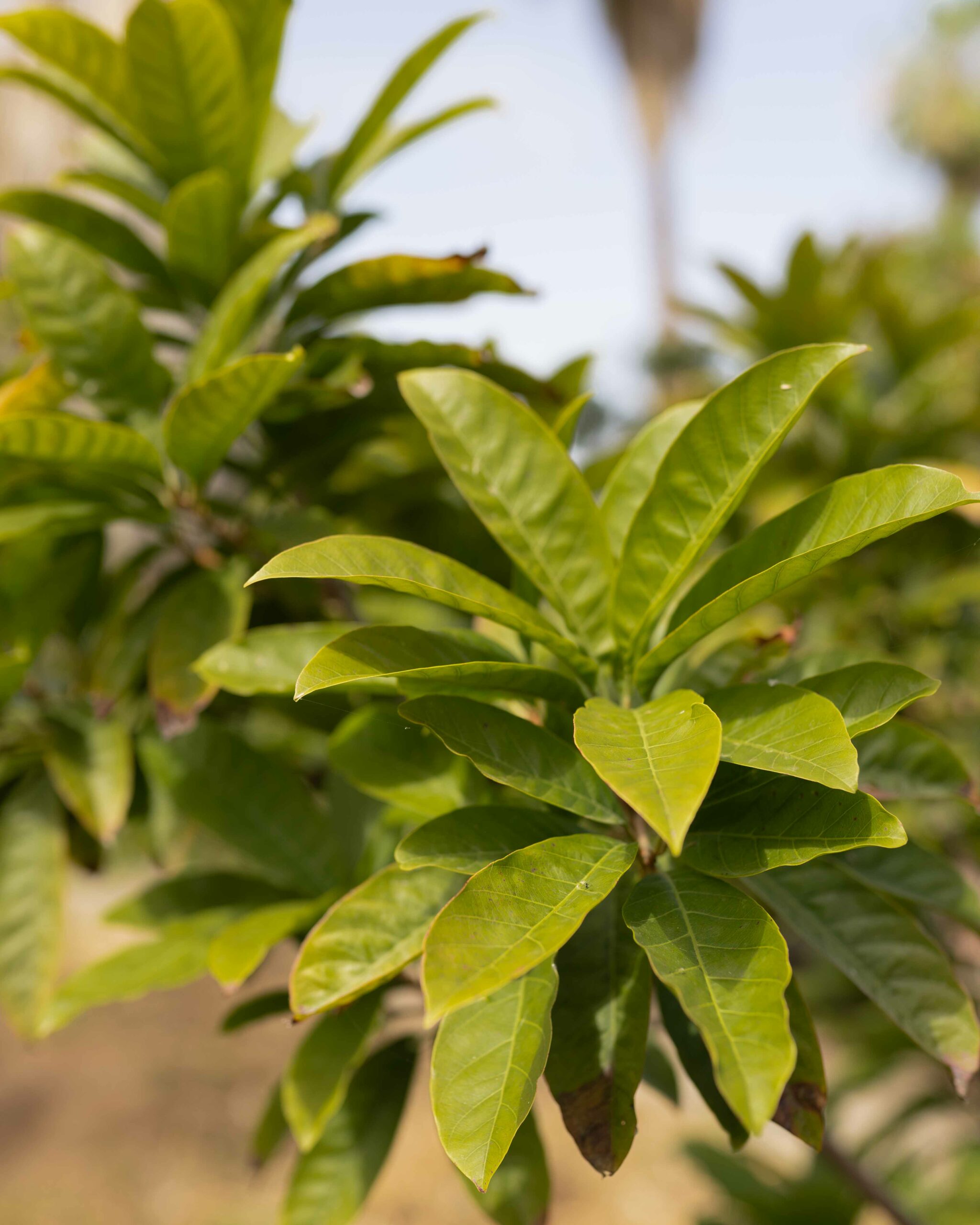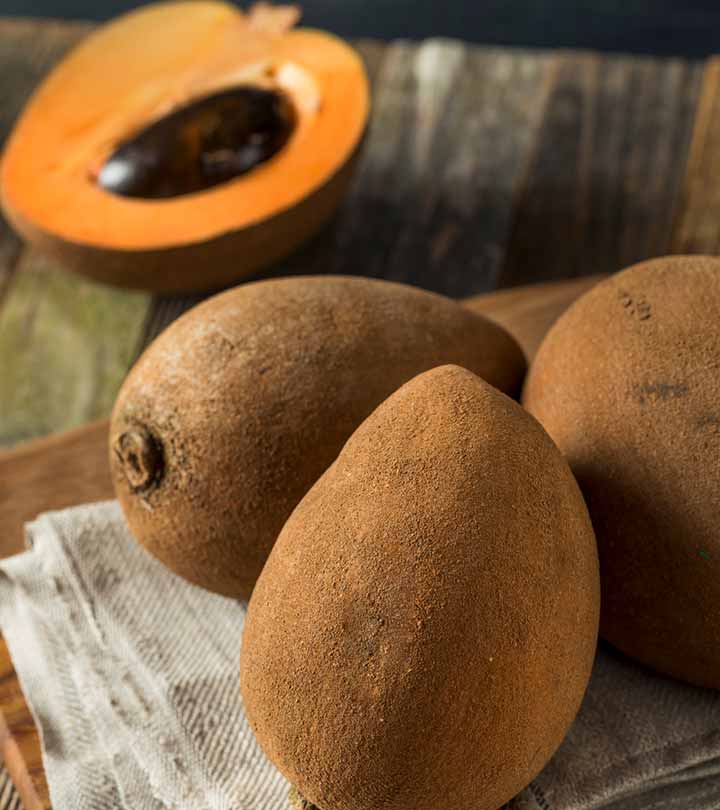Manilkara zapota
Breiapfel
(Sapote, Kaugummibaum, Sapotillbaum)
Englische Bezeichnung: Sapodilla, Sapota, Chikoo, Naseberry, Nispero
Spanische Bezeichnung: Chicle, Chicozapote
Familie
Sapotengewächse (Sapotaceae)
Hauptbestandteile:
Mineralstoffe: Kalium, Calcium
Vitamine: B-Vitamine, E, C,
Sekundäre Pflanzenstoffe: Antioxidantien,
Ernte-Hinweise:
Es ist nicht immer einfach zu erkennen, wann ein Breiapfel reif ist. Die beste Möglichkeit, um den Reifezustand zu testen, ist, sie mit dem Fingernagel einritzen. Reife Früchte zeigen die unterirdische Schicht mit hellroter Farbe, während unreife Früchte grün sind und noch Latex absondern.
Es ist empfohlen die sandige Kruste abzuwaschen, bevor die Frucht zum Nachreifen beiseite gelegt wird. Sie sollte gegessen werden, wenn sie noch etwas bissfest, nicht matschig ist. Die Früchte brauchen in der Regel etwa 4 Tage bei Zimmertemperatur, um vom Pflücken an zu vollständig zu reifen.
Verwendung:
-
Frucht: Obstsalat, Säfte, Getränke, Pudding…
Der Milchsaft des Breiapfelbaums, der ähnlich wie beim Gummibaum durch Einschneiden der Rinde gewonnen wird, war früher ein wichtiger Bestandteil zur Herstellung von Kaugummi. Da die Industrie heute jedoch vor allem synthetische Grundstoffe verwendet, wird der Breiapfelbaum hauptsächlich nur noch wegen seiner Früchte angebaut.
Family
Sapotes (Sapotaceae)
Main components:
Minerals: potassium, calcium
Vitamins: B vitamins, E, C
Secondary plant substances: antioxidants
Harvesting guide:
It is not always easy to tell when a mush apple is ripe. The best way to test the ripeness is to score them with your fingernail. Ripe fruits show the underground layer with bright red colour, while unripe fruits are green and still secrete latex.
It is recommended to wash off the sandy crust before setting the fruit aside to ripen. It should be eaten when it is still somewhat firm to the bite, not mushy. The fruit usually takes about 4 days at room temperature to fully ripen from picking.
Use:
-
Fruit: fruit salad, juices, drinks, puddings…
The milky sap of the mush apple tree, which is obtained by cutting into the bark in a similar way to the gum tree, used to be an important ingredient for the production of chewing gum. However, as the industry today mainly uses synthetic base materials, the musk apple tree is mainly cultivated only for its fruits.
Familia
Sapotes (Sapotaceae)
Componentes principales:
Minerales: potasio, calcio
Vitaminas: vitaminas B, E, C
Sustancias vegetales secundarias: antioxidantes
Guía de cosecha:
No siempre es fácil saber cuándo está madura una manzana mush. La mejor forma de comprobar su madurez es marcarlas con la uña. Los frutos maduros muestran la capa subterránea de color rojo brillante, mientras que los inmaduros son verdes y aún segregan látex.
Se recomienda lavar la corteza arenosa antes de apartar la fruta para que madure. Debe comerse cuando aún esté algo firme al morderla, no blanda. La fruta suele tardar unos 4 días a temperatura ambiente en madurar completamente desde su recolección.
Uso:
-
Fruta: macedonia, zumos, bebidas, pudines…
La savia lechosa del manzano almizclero, que se obtiene cortando la corteza de forma similar a la del árbol del chicle, solía ser un ingrediente importante para la producción de goma de mascar. Sin embargo, como hoy en día la industria utiliza sobre todo materias primas sintéticas, el manzano almizclero se cultiva principalmente sólo por sus frutos.









































